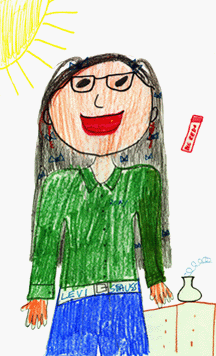This is the second in a series on " Information, language, knowledge and connectedness". The first post is here.
Let's see what the utterance of "Apples are red" means.
This is a manifestation of an internal world view. It is expressed in English language. It is a communication.
I have assumed that you know what every of these three words: Apples, are and red represent. These words are handles to complex internal representations in my internal world. If you can agree to this sentence, your internal world view would have
- an association of the handle "Apples" to some internal representations in your world view. So are the other two words: are and red.
- some past experience similar to mine so that you can see the linkage of "apples" in your internal world view to "redness" in your internal world view.

Now, look at this picture. I say "These apples are red." What happens?
Such a statement can be found easily in a lot of textbook, manual or handbooks. Here a complex process has occurred without we realising it.
Although I am refering to a photo on this webpage, I am depending on an automatic transparent application of your perception system to map
the object in the photo to your internal world view of the handle "apples". You are asked to ignore the fact that it is a photo. You are asked to map a two-dimensional image to an object. Again, as in the first case, I am also assuming that your internal world view of
apples,
are and
red are correctly linked to these handles.
Stephen's article
An Introduction to Connective Knowledge discusses in details the intepretation of the colour "red". Here I am asking you also to map the black and white image in this photo to the handle "red" in your world view.
Most people would not have any problem engaging with someone to discuss some phenomena based on photo images. So let's try.
A: Can you agree with me that the apples in the photo are red?
B: No. The apples in the photo are green. They are not red delicious. They are granny smith.
A: Wrong, although they do not have the perks on the bottom, it does not mean that they are granny smith. They are Fuji.
....
So, the discussion goes on.
Here, a lots of internal world views are invoked. The people engaged in the discussion assume that the other party knows what is "red delicious" and the colour of "red delicious" and "granny smith" and so on. The communication will break down if one of them do not share a common internal world view of any of these handles in the exchanges.
The points I have made here are:
- We, through out our lives, have built internal world views. This is a highly automated process which we no longer pay attention to in most situations. However, there are situations that we deliberately want to engage in world view building - during teaching, learning, training, ...
- In our daily communication, the mapping of these handles to our internal world view is mostly automatic and transparent.
What is the role language is playing here? In this simple example, not much. See the same dialog above between an English and a Chinese.
A: Can you agree with me that the apples in the photo are red?
B: 不。在相片的蘋果是綠色的。他們不是紅蛇果。他們是granny smith。
A: Wrong, although they do not have the perks on the bottom, it does not mean that they are granny smith. They are Fuji.
....
The external manifestation, as handles, are easily ignored and we can shift our focus several layers beyond the manifestation. For example, not only that we have ignored the fact that it is a photo, and have gone into the objects in the photo, we have also ignored the black and white shades and depends on our internal world view to discuss the colour (which is not represented in the manifest).
The same applies to many subject domains. Modern physicists in China would share a similar world view (in Physics at least) with western physicists from both USA, England, Germany or France even they do not have the same communicative language.
For those who are curious of what is the actual colour in the photo above, click
here.
Photo credit: original from http://www.sxc.hu by enver uçarer, grey scale by me


















 Now, look at this picture. I say "These apples are red." What happens?
Now, look at this picture. I say "These apples are red." What happens?

 This is how the researcher shows a young chimpanzees how to retrieve food.
This is how the researcher shows a young chimpanzees how to retrieve food.






